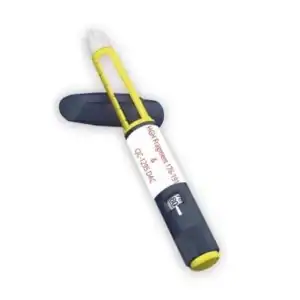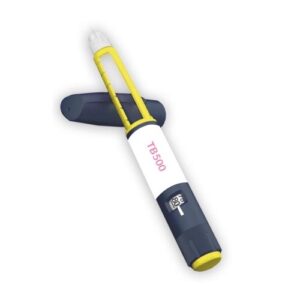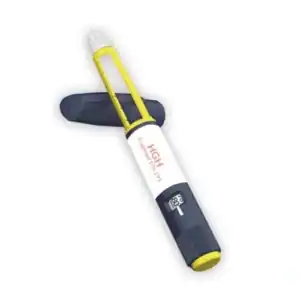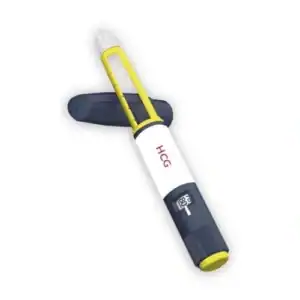Please be aware of our revised hours during the holiday season. We will operate on a half-day schedule on December 24th and 31st and will be CLOSED from December 25th to 28th, with limited customer service available. We will fully REOPEN on December 29th and again on January 2nd.
Choosing the right injection method is important when giving medications or peptides. The method depends on how the drug is absorbed and its intended effect on the body. Understanding the different injection methods can help in both medical and research settings.
There are four main different injection methods:
Each method is used based on the type of substance and how it needs to be absorbed.
Subcutaneous injections involve injecting drugs into the fatty tissue layer just under the skin, specifically where there is subcutaneous fat. This method is often used for drugs that need to be absorbed slowly, minimizing potential discomfort. The fatty tissue layer has fewer blood vessels than muscle tissue, which makes it suitable for slow absorption.
Common examples of drugs given this way include insulin, HCG (used in fertility research), and blood thinners. Some research peptides, like TB 500 (used in studies for tendon injury repair related to the pelvis), are also injected subcutaneously.
Moreover, joint injections for osteoarthritis are another method used for pain management. These injections are easier to give and are often used for daily self-administration.
Intramuscular (IM) injections deliver the drug directly into a person’s muscle tissue. This method is used for drugs that need to be absorbed quickly through an infusion. Muscle tissue has a rich blood supply and more blood vessels than fat, so the drug enters the bloodstream faster.
Examples of drugs given intramuscularly include vaccines, antibiotics, and hormones. Research peptides such as Human Growth Hormone (HGH) and HGH Frag 176-191 (studied for muscle growth and fat loss) are often delivered this way. Common injection sites for IM injections include the shoulder, thigh, and hip muscles. The dorsogluteal muscle should be avoided to prevent injury.
Intramuscular (IM) injections are used in research to deliver substances into muscle tissue. Muscles absorb substances quickly because they have many blood vessels.
This method is often chosen in research for substances that need fast absorption.
Intradermal injections are used to inject substances into the skin’s dermis layer, just under the outer skin. This method is mainly used for testing purposes, such as allergy tests, or for specific research on peptides.
Intradermal injections can be done using methods like the Mantoux method or intradermal microinjections, which use smaller needles. These are often used in anesthetic studies or certain peptide research.
For research, nasal sprays offer a non-invasive alternative to injections. These sprays allow the substance to be absorbed through the mucous membranes in the nose, offering a faster delivery option.
Nasal sprays are useful in research when it’s important to improve subject compliance, as they are easy to use. For more information, visit our Nasal Sprays category page.
Additionally, pre-mixed pens are often used for injecting peptides. These pens come pre-mixed with bacteriostatic water, so no preparation is needed.
This makes them convenient for accurate dosing and saves time, making them ideal for research applications. For more information, visit our Pre- mixed pens category page.
Explore Peptide Supplies at Direct Peptides for all your reconstitution requirements.
Proper injection technique is vital for safe practice. Healthcare professionals advise rotating injection sites to prevent skin lesions and scars. Ensure hand hygiene, choose the right needle length, and be cautious near blood vessels to avoid bleeding. Familiarize yourself with different injection types and related risks.
Confirm the medication and dosage before administering injections. Educate patients on possible side effects and signs of allergic reactions for prompt intervention. Following best practices safeguards against complications and ensures effective treatment outcomes.
Hand hygiene and sterile techniques are vital for safe injections. They help lower the risk of infection and other problems. Healthcare workers must follow strict hand hygiene steps before giving any injection. This means washing hands well with soap and water or using an alcohol-based hand rub. All surfaces should be clean and free of germs.
Sterile techniques include using clean, unused tools like syringes and needles. It’s also important to keep the injection area sterile. Avoid touching any part of the syringe that will touch the patient to prevent spreading germs. Wiping the injection site with an alcohol swab cleans the area and lowers infection risk.
By combining good hand hygiene with sterile methods, healthcare providers can give safe and effective injections. This protects patients and improves their care experience.
Potential side effects of injections may include pain, swelling, redness at the injection site, fever, low blood pressure, or signs of an allergic reaction. It’s essential to discuss any concerns with your healthcare provider and follow their guidance.
Healthcare professionals should follow proper injection techniques to minimize side effects. Maintaining hand hygiene reduces the risk of infection at the injection site.
It’s crucial to select the best type of injection and type of medication based on the patient’s condition. Adhering to guidelines from organizations like the FDA and CDC ensures the safety and efficacy of injectable medications.
Each of the different injection methods—subcutaneous, intramuscular, intravenous injection, and intradermal—has specific uses depending on the drug and how it should be absorbed into various parts of the body. Researchers must consider the characteristics of the substance to choose the right method.
It is important to note that peptides like TB500, HCG, HGH, and HGH Frag 176-191 are intended for research purposes only and should not be used in humans. They should be handled following all research guidelines and ethical standards.
[1] Kim H, Park H, Lee SJ. Effective method for drug injection into subcutaneous tissue. Sci Rep. 2017 Aug 29;7(1):9613.
[2] Ayinde O, Hayward RS, Ross JDC. The effect of intramuscular injection technique on injection associated pain; a systematic review and meta-analysis. PLoS One. 2021 May 3;16(5):e0250883.

HGH Fragment CJC-1295 Dac Pre Mixed 2.5mg
£21.08 – £56.92Price range: £21.08 through £56.92 Select options This product has multiple variants. The options may be chosen on the product page
New Reduced Price
New Reduced Price
New Reduced Price
TB500 Pre-Mixed Pen 5mg Peptide
£30.58 – £82.57Price range: £30.58 through £82.57 Select options This product has multiple variants. The options may be chosen on the product page
HGH Fragment 176-191 Pre-Mixed Pen 5mg Peptide
£41.29 – £111.43Price range: £41.29 through £111.43 Select options This product has multiple variants. The options may be chosen on the product page
HCG Pre-Mixed Pen 5000iu Peptide
£35.29 – £95.28Price range: £35.29 through £95.28 Select options This product has multiple variants. The options may be chosen on the product pageALL CONTENT AND PRODUCT INFORMATION AVAILABLE ON THIS WEBSITE IS FOR EDUCATIONAL PURPOSES ONLY.
DISCLAIMER: These products are intended solely as a research chemical only. This classification allows for their use only for research development and laboratory studies. The information available on our Direct Peptides website: https://direct-peptides.com is provided for educational purposes only. These products are not for human or animal use or consumption in any manner. Handling of these products should be limited to suitably qualified professionals. They are not to be classified as a drug, food, cosmetic, or medicinal product and must not be mislabelled or used as such.